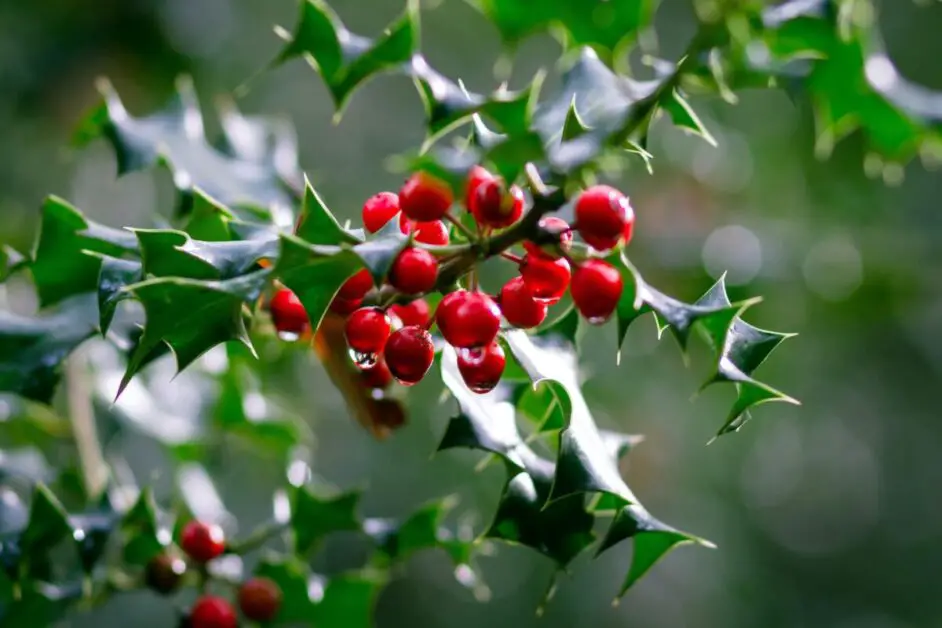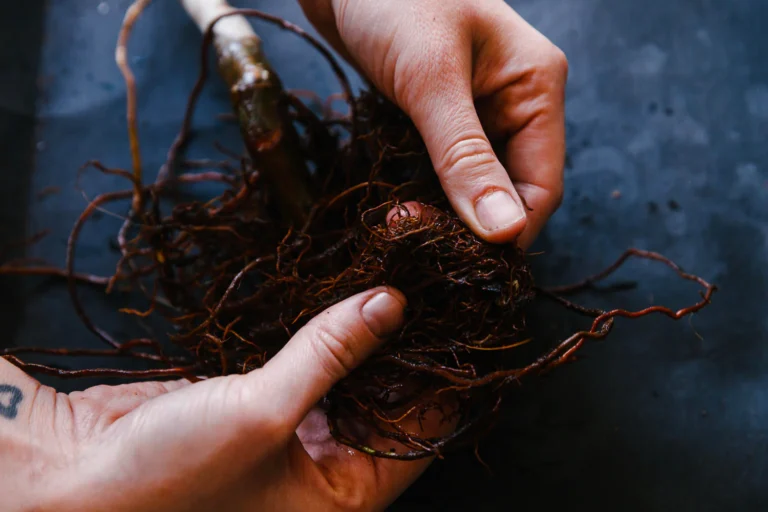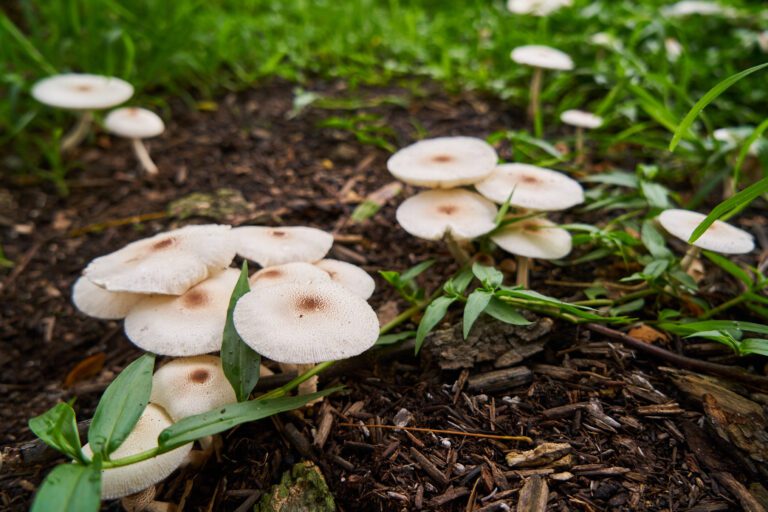Holly Tree Types and General Care
Understanding Holly Trees: An Overview
Holly trees are a beloved addition to many gardens and landscapes, known for their vibrant green foliage and bright red berries. These evergreen trees bring a touch of beauty and elegance to any outdoor space, making them a popular choice for both homeowners and professional landscapers.
One of the key features of holly trees is their ability to thrive in various climates and soil conditions. Whether you live in a cold, snowy region or a warm, tropical area, there is likely a holly tree variety that will flourish in your environment. From the American holly (Ilex opaca) to the Chinese holly (Ilex cornuta), each species offers its own unique characteristics and appeal.
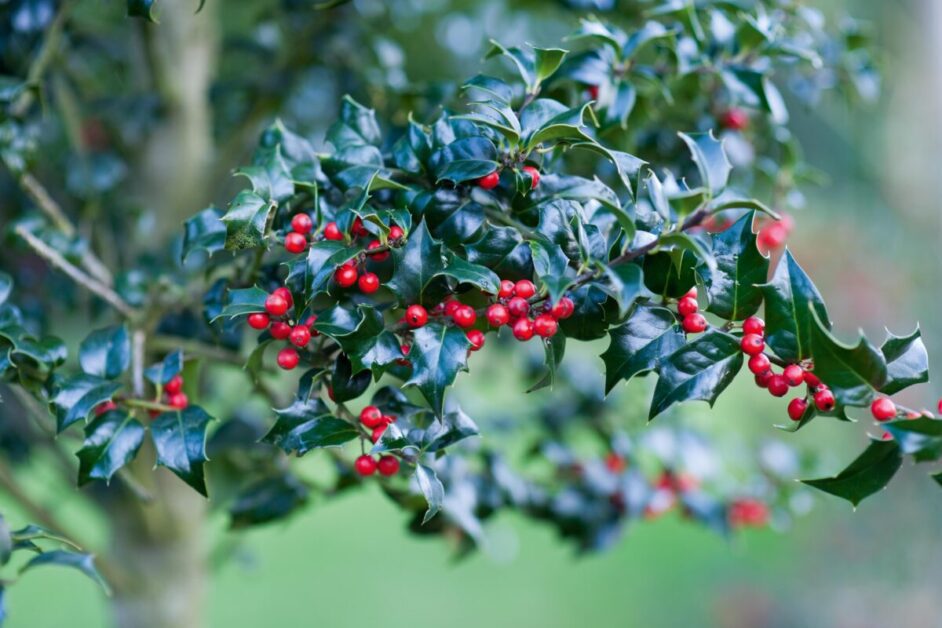
In addition to their aesthetic appeal, holly trees also have a rich cultural and historical significance. For centuries, these trees have been associated with Christmas and the holiday season, symbolizing hope and joy. In folklore and mythology, holly trees have been revered for their protective properties, believed to ward off evil spirits and bring good fortune to those who planted them.
Whether you are a seasoned gardener or a novice enthusiast, understanding the basics of holly trees is essential for successfully growing and maintaining these magnificent trees in your own backyard. In the following sections, we will explore the different varieties of holly trees, discuss the ideal growing conditions, and provide practical tips and advice for planting, pruning, and caring for these beautiful evergreens. So, let’s dive in and discover the wonderful world of holly trees together.
Exploring the Different Varieties of Holly Trees
Holly trees are a diverse group of plants, offering a wide range of varieties to suit any garden or landscape. While the most commonly known holly tree is the American holly (Ilex opaca), there are numerous other species and cultivars worth exploring.
One popular variety is the English holly (Ilex aquifolium), known for its glossy, dark green leaves and bright red berries. This species is widely cultivated for its festive appearance and is often used in holiday decorations. Another exquisite variety is the Chinese holly (Ilex cornuta), featuring distinctive spiny leaves and an abundance of vibrant berries. Its natural pyramidal shape makes it an excellent choice for hedges or privacy screens.
For those seeking a compact holly tree, the dwarf yaupon holly (Ilex vomitoria) is a fantastic option. This small evergreen boasts an attractive rounded form, making it ideal for small gardens or container planting. On the other hand, the dahoon holly (Ilex cassine) is a larger tree with a more upright habit, reaching heights of 30 feet or more. Its glossy leaves and abundant red berries create a captivating display.
The table below shows us the different types of holly trees:
| Variety | Scientific Name | Features |
|---|---|---|
| American Holly | Ilex opaca | Evergreen, glossy leaves, red berries |
| English Holly | Ilex aquifolium | Dark green, spiky leaves, red berries |
| Japanese Holly | Ilex crenata | Small, compact, various leaf shapes |
| Chinese Holly | Ilex cornuta | Spiny leaves, orange to red berries |
| Dwarf Yaupon Holly | Ilex vomitoria ‘Nana’ | Small, compact, dark green leaves |
| Blue Holly | Ilex x meserveae | Blue-green tint, spiky leaves, red berries |
Whether you’re looking for a traditional holiday centerpiece or a foundational element for your landscaping, the diverse range of holly tree varieties offers something for every taste and need. As you explore the different options, consider the specific requirements and characteristics of each variety to ensure the perfect fit for your garden.
Choosing the Right Location for Your Holly Tree
Choosing the right location for your holly tree is a crucial step in ensuring its optimal growth and health. Holly trees thrive in well-drained soil and prefer locations that receive full sunlight or partial shade. It is important to research the specific variety of holly tree you have or plan to plant, as different varieties have varying light and soil requirements.
When selecting a location for your holly tree, consider the soil conditions. Holly trees prefer slightly acidic to neutral soil with a pH range of 5.0 to 7.0. It is recommended to conduct a soil test to determine the pH level and make any necessary amendments before planting your holly tree. Well-draining soil is essential to avoid waterlogging, as holly trees are susceptible to root rot in overly wet conditions.
Furthermore, holly trees benefit from receiving sufficient sunlight. While they can tolerate some shade, they tend to produce more vibrant foliage and berries when exposed to at least six hours of direct sunlight each day. When choosing a location, take into account the surrounding landscape and any nearby structures or trees that may cast shade on your holly tree.
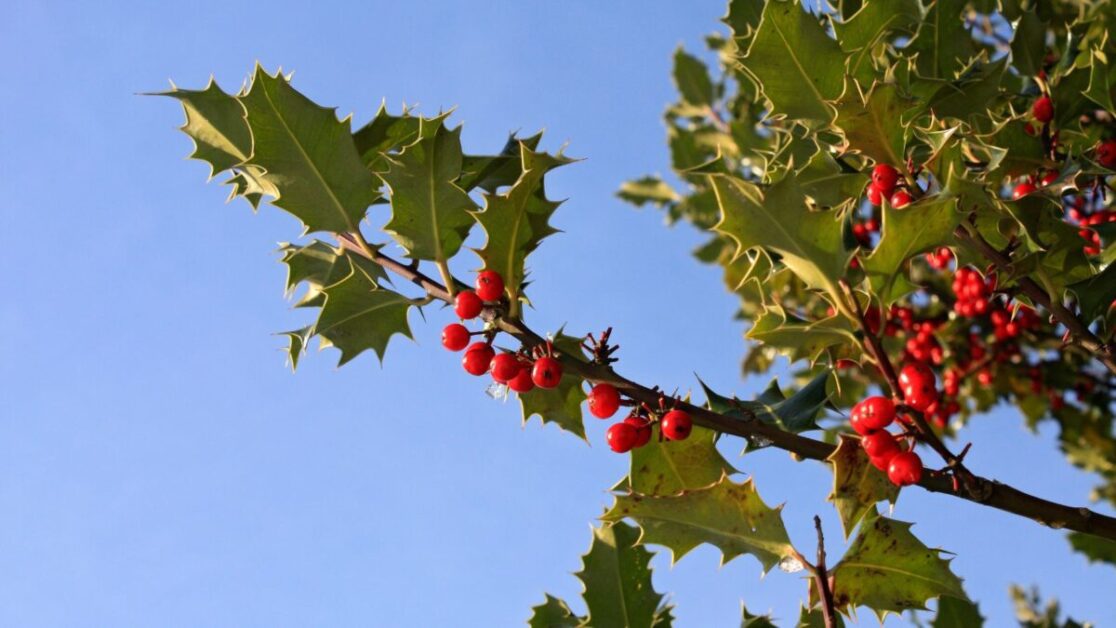
Another factor to consider is the space needed for your holly tree to grow. Holly trees can range in height from small, compact varieties to larger, more expansive ones. Ensure that you choose a location with enough space for your holly tree to reach its mature size without being constrained or overcrowded by other plants or structures.
By carefully selecting the right location for your holly tree, you are setting the foundation for its long-term health and visual appeal. Keep in mind the specific soil, light, and space requirements of your chosen variety to ensure your holly tree thrives in its new environment.
Planting Holly Trees: Step-by-Step Guide
Planting holly trees requires careful consideration and attention to detail. Follow this step-by-step guide to ensure the successful establishment of your holly tree.
1. Selecting the Right Spot: Choose a location that receives full to partial sunlight, as holly trees thrive in these conditions. The soil should be well-draining and slightly acidic, with a pH level between 5.0 and 6.5. Avoid areas prone to waterlogging, as excessive moisture can cause root rot.
2. Digging the Hole: Dig a hole that is twice the width and slightly shallower than the root ball of the holly tree. This allows the roots to spread easily and establish themselves in the soil. Ensure the hole is free from rocks, weeds, or any other debris that may impede root growth.
3. Preparing the Soil: Before planting, mix organic matter such as compost or well-rotted manure with the existing soil to improve its fertility and drainage. This will provide a nutrient-rich environment for the holly tree to thrive.
4. Planting the Holly Tree: Gently remove the holly tree from its container and place it in the center of the prepared hole. Ensure that the top of the root ball is level with or slightly above the soil surface. Backfill the hole with the soil mixture, firmly but gently pressing it around the root ball. Avoid compacting the soil too tightly, as this can restrict root growth.
5. Watering and Mulching: After planting, thoroughly water the holly tree to help settle the soil and eliminate air pockets around the roots. Apply a layer of organic mulch, such as wood chips or pine needles, around the base of the tree, extending it at least three inches away from the trunk. Mulching helps retain moisture, suppresses weed growth, and regulates soil temperature.
By following these steps, you can ensure the successful planting of your holly tree, laying the foundation for its healthy growth and vibrant appearance. Remember to provide regular care and maintenance to help your holly tree flourish for years to come.
Essential Soil Requirements for Holly Trees
Holly trees, known for their vibrant foliage and attractive berries, are a popular choice for both ornamental and landscape purposes. However, to ensure their optimal growth and health, it is essential to understand their soil requirements. Holly trees thrive best in well-draining soil that is slightly acidic to neutral in pH. A pH range of 5.0 to 6.5 is considered ideal for their growth.
When it comes to soil texture, holly trees prefer a loamy soil that is rich in organic matter. This helps with moisture retention and promotes aeration, allowing the roots to access oxygen easily. Sandy soils, on the other hand, tend to drain too quickly and may lead to water stress, while heavy clay soils can become compacted and hinder root development.
In terms of fertility, holly trees have moderate nutrient requirements. It is recommended to conduct a soil test to determine the specific nutrient needs of your holly tree. This will help you make informed decisions regarding fertilization. Generally, a balanced slow-release fertilizer can be applied in spring to provide essential nutrients throughout the growing season.
Additionally, holly trees appreciate a layer of organic mulch around the base. This helps conserve moisture, suppress weed growth, and further enriches the soil as it decomposes. However, it is important to avoid piling mulch against the trunk as this can create a favorable environment for pests and diseases.
Understanding and meeting the soil requirements of holly trees is crucial for their overall health and vitality. By providing the right soil conditions, you can ensure that your holly tree thrives and adds beauty to your garden or landscape. Stay tuned for the upcoming sections where we will discuss other important aspects of growing and caring for holly trees.
Here is a table that shows the soil requirements needed for holly tree:
| Soil Aspect | Description |
|---|---|
| pH Range | 5.0 to 6.5 (Slightly acidic to neutral) |
| Soil Texture | Loamy, rich in organic matter |
| Drainage | Well-draining soil is essential |
| Moisture Retention | Loamy soil helps with moisture retention |
| Aeration | Loamy soil promotes aeration for easy root access |
| Soil Types | Avoid sandy soils (drain too quickly) and heavy clay soils (compaction) |
| Fertility | Moderate nutrient requirements, conduct soil test for specifics |
| Fertilization | Apply balanced slow-release fertilizer in spring |
| Mulching | Use organic mulch around the base (avoid piling against the trunk) |
Watering Holly Trees: Dos and Don’ts
Proper watering is essential for maintaining the health and vitality of your holly trees. While these stunning evergreens are known for their tolerance to drought, it is important to strike a balance with their water needs to ensure their long-term survival. Here are some dos and don’ts to follow when watering your holly trees.
Firstly, do water deeply and infrequently. Holly trees have deep root systems, so it is important to provide them with water that reaches their roots rather than just moistening the surface. Deep watering encourages the roots to grow deeper, making the tree more resilient to drought conditions. Aim to water your holly tree thoroughly every 7-10 days during dry periods, allowing the water to penetrate at least 6 inches into the soil.
On the other hand, don’t overwater your holly trees. While they do need regular watering, excessive moisture can lead to root rot and other fungal diseases. It is important to allow the top few inches of soil to dry out between watering sessions. Overwatering can suffocate the roots and cause irreversible damage to the tree. To determine if your holly tree needs watering, you can simply dig a small hole in the soil and check the moisture level with your finger. If the soil feels moist, hold off on watering for a few days.
Providing Adequate Sunlight for Your Holly Tree
Providing adequate sunlight is crucial for the healthy growth and development of your holly tree. As a gardener, it is essential to understand the sunlight requirements of different holly tree varieties to ensure their optimal well-being.
Holly trees are generally adaptable to various light conditions, but they thrive best in full sun to partial shade. When selecting the location for your holly tree, consider the amount of daily sunlight the area receives. Aim for a spot that receives at least six hours of direct sunlight each day.
While holly trees can tolerate partial shade, excessive shade may hinder their ability to produce abundant foliage and vibrant berries. Insufficient sunlight can also lead to leggy growth and weak branches. Therefore, it is important to strike a balance between providing enough shade to protect the tree from scorching heat and allowing ample sunlight for its healthy development.
By ensuring your holly tree receives adequate sunlight, you can create an ideal environment for its growth and ensure its longevity. However, it is always beneficial to consult local horticulturists or arborists for specific sunlight recommendations based on your holly tree’s species and local climate conditions.
Pruning Holly Trees: Best Practices
Pruning Holly Trees: Best Practices
Pruning is an essential aspect of holly tree maintenance, as it helps enhance their overall health and appearance. However, it is crucial to approach pruning with caution and adhere to best practices to ensure optimal results. Before proceeding with any pruning activities, it is recommended to equip yourself with the proper tools, including sharp bypass pruners and loppers, to avoid causing any damage to the tree.
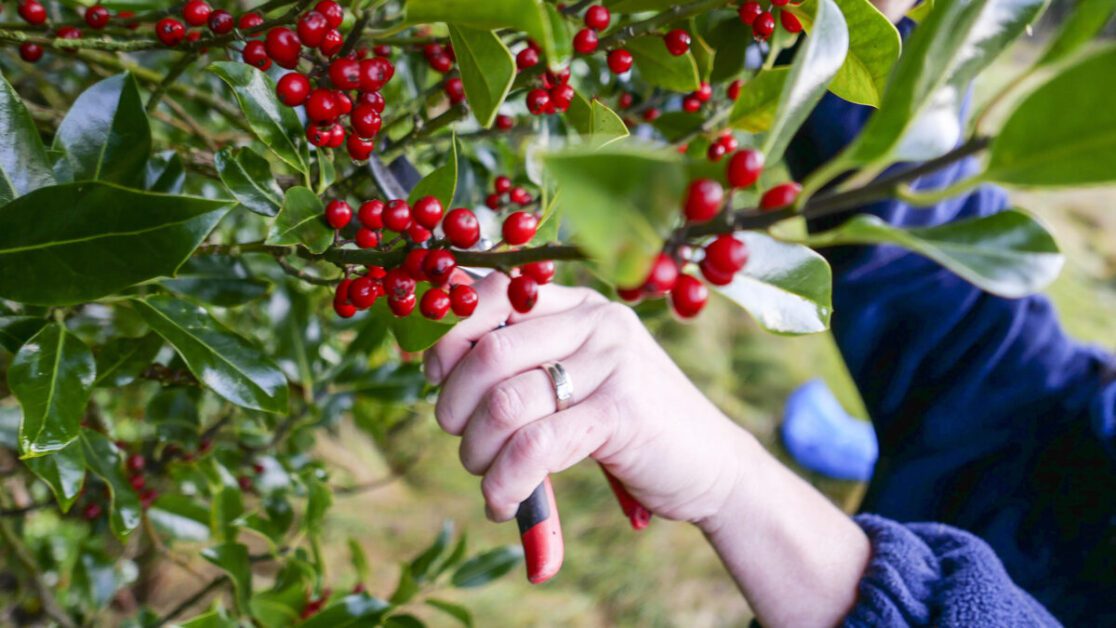
When it comes to pruning holly trees, it is advisable to concentrate on removing dead, diseased, or damaged branches. This action not only eliminates potential entry points for pests and diseases but also promotes new growth and vitality. As you prune, make clean cuts just outside the branch collar, as this aids in the healing process and prevents unnecessary stress on the tree. Moreover, avoid overpruning, as this can lead to reduced flowering and berry production. By following these best practices, you can help your holly tree thrive and maintain its natural beauty.
Fertilizing Holly Trees: What You Need to Know
Fertilizing holly trees is a crucial aspect of their overall health and growth. By providing the right nutrients at the right time, you can ensure that your holly trees thrive and flourish. When it comes to fertilizing holly trees, there are a few things you need to know.
First and foremost, it’s important to choose the right type of fertilizer for your holly trees. Generally, a slow-release, balanced fertilizer with a ratio of nitrogen (N), phosphorus (P), and potassium (K), such as a 10-10-10 or 14-14-14 blend, is recommended. This ensures that the necessary nutrients are delivered over a longer period of time, promoting steady and sustained growth.
In addition to selecting the right fertilizer, timing is key when it comes to fertilizing holly trees. It is best to fertilize in early spring, just before new growth begins. Applying fertilizer at this time allows the holly trees to absorb the nutrients and utilize them efficiently as they enter their active growth phase. Another application of fertilizer can be done in early fall to support healthy root development before winter dormancy.
Remember, over-fertilizing holly trees can be detrimental to their health. Excessive nitrogen, for example, can lead to excessive leaf growth at the expense of flower and fruit production. To prevent this, always follow the recommended dosage provided on the fertilizer packaging and avoid applying fertilizer too close to the trunk, as this can burn the tree’s roots.
In the next section, we will delve deeper into the specific nutrient requirements of holly trees and provide you with a detailed breakdown of the essential soil requirements for their optimal growth.
Dealing with Common Pests and Diseases in Holly Trees
Holly trees are generally hardy and resilient, but like any other plant, they are susceptible to certain pests and diseases. Understanding and dealing with these common issues is crucial to ensuring the health and vitality of your holly trees.
One common pest that can affect holly trees is the spider mite. These tiny insects are barely visible to the naked eye but can cause significant damage to your plant. Spider mites feed on the sap of holly leaves, leading to discoloration, wilting, and deformities. To tackle this pest, it is essential to regularly inspect your trees for any signs of infestation. Applying an appropriate insecticidal soap or horticultural oil can help control spider mites effectively. It is also essential to prune any heavily infested branches and ensure good hygiene practices, such as removing fallen leaves and debris from the base of the tree.
Another common issue that holly trees face is leaf spot diseases. These fungal infections can cause unsightly black or brown spots on the leaves, leading to defoliation and weakening of the tree. To prevent and control leaf spot diseases, it is crucial to maintain good airflow around the tree by ensuring proper spacing and pruning. Avoid overhead watering, as wet leaves can encourage the growth and spread of fungal infections. Applying a fungicide specifically formulated for holly trees can also help protect against leaf spot diseases. Regularly monitoring your trees and promptly addressing any signs of infection will greatly contribute to the overall health of your holly trees.
Here is a table about the common pests and diseases of holly tree:
| Pest/Disease | Description | Prevention | Treatment |
|---|---|---|---|
| Scale Insects | Small, immobile pests that attach to the stems and leaves. | Regular inspection for early detection. | Insecticidal soaps, neem oil, or horticultural oils. |
| Spider Mites | Tiny arachnids that suck sap, causing stippling and webs. | Maintain humidity levels. Use predatory mites for control. | Insecticidal soap, neem oil, or miticides. |
| Leaf Spot Diseases | Fungal diseases causing dark spots on leaves. | Water at the base, avoid overhead watering. | Fungicides containing copper or other recommended fungicides. |
| Powdery Mildew | White, powdery substance on leaves caused by fungi. | Provide good air circulation. Remove affected foliage. | Fungicides, neem oil, or potassium bicarbonate. |
| Root Rot | Fungal infection leading to wilting and decline. | Well-draining soil. Avoid overwatering. | Improve drainage, fungicides, and root rot-resistant holly varieties. |
| Canker Diseases | Caused by fungi, resulting in lesions and dieback. | Prune infected branches. Apply fungicides preventatively. | Copper-based fungicides or other recommended treatments. |
| Aphids | Small, sap-sucking insects that cluster on new growth. | Encourage natural predators like ladybugs. | Insecticidal soap, neem oil, or beneficial insects. |
| Deer Damage | Browsing by deer can lead to damaged foliage. | Use deer-resistant holly varieties. Install physical barriers. | Repellents, fencing, or deer-resistant plants in the vicinity. |
Protecting Holly Trees in Winter: Frost and Freeze Precautions
Holly trees are known for their resilience and ability to withstand harsh winter conditions. However, frost and freeze can still pose a threat to these magnificent trees, especially during extreme weather events. As a gardener, it is essential to take proactive measures to protect your holly trees during the winter months, ensuring their health and longevity.
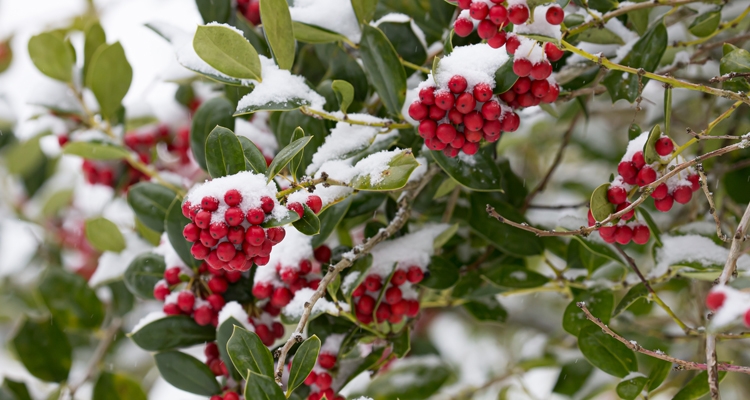
One of the most effective ways to protect holly trees from frost and freeze is by applying a layer of organic mulch around the base of the tree. This mulch acts as insulation, keeping the soil and roots warmer. Additionally, it helps to retain moisture, preventing dehydration in the tree during dry winter spells. When applying mulch, make sure to create a thick layer that extends beyond the drip line of the tree. This will provide optimal protection, shielding the entire root system from freezing temperatures.
Propagating Holly Trees: From Seeds to Cuttings
Propagating holly trees can be an exciting and rewarding experience for any avid gardener. One of the methods that can be used is through seeds. Holly tree seeds are readily available from reputable nurseries or can be collected from mature holly trees. It’s important to note that not all holly tree varieties produce viable seeds, so it’s best to consult with experts or reference credible sources to determine the appropriate species for propagating via seeds.
To start the propagating process from seeds, it’s crucial to prepare a suitable growing medium. A mixture of equal parts peat moss and coarse sand or perlite is often recommended for optimal seed germination. The seeds should be sown at a depth equal to their size and should be lightly covered with the growing medium. Maintaining a damp environment is key, so it’s advisable to cover the container with a clear plastic bag to retain moisture. Additionally, keeping the container in a warm location or using a heating pad can aid germination, which typically takes anywhere from several weeks to a few months.
An alternative method of propagating holly trees is through cuttings. Using this method allows for the production of genetically identical holly trees. It’s important to choose healthy and disease-free branches for the cuttings. The ideal time to take the cuttings is during the summer when the holly tree is actively growing. The cuttings should be around 4-6 inches long and taken from the tips of the branches. Removing the lower leaves and making a clean cut just below a node will promote successful root development. Dipping the cut end into a rooting hormone can also enhance rooting capabilities. Placing the cuttings in a well-draining medium, such as a mixture of peat moss and perlite, and keeping them consistently moist is essential for their successful growth.
Propagating holly trees from seeds and cuttings allows garden enthusiasts to expand their collection of these beautiful and iconic trees. Whether you choose to sow seeds or take cuttings, patience, diligence, and proper care are necessary for successful propagation. So, prepare your growing medium, gather your seeds or cuttings, and embark on this rewarding journey of propagating your very own holly trees.
Transplanting Holly Trees: Tips for Success
Transplanting holly trees is a delicate process that requires careful attention and proper technique to ensure success. When it comes to relocating these beautiful evergreens, there are a few key tips that can make all the difference in preserving their health and promoting new growth.
First and foremost, timing is crucial when transplanting holly trees. The ideal time to undertake this task is during the tree’s dormant period, which typically falls in late winter or early spring. This allows the holly tree to establish its roots in the new location before the onset of warmer weather and ensures minimal stress on the plant.
Before beginning the transplanting process, it is important to prepare the new location thoroughly. Choose a spot that provides adequate sunlight and well-draining soil, as holly trees thrive in these conditions. Dig a hole that is approximately twice the width and depth of the tree’s root ball, ensuring plenty of room for the roots to spread out and anchor the tree securely. Once the hole is ready, carefully remove the holly tree from its current location, taking care to minimize damage to the root system. Place the tree in the prepared hole, ensuring that it is level and positioned correctly. Finally, backfill the hole with soil, gently firming it around the roots to remove air pockets.
Proper care and attention after transplanting are essential for the holly tree’s successful establishment. Water the tree thoroughly immediately after transplanting to help settle the soil and hydrate the roots. Apply a layer of organic mulch around the base of the tree, keeping it a few inches away from the trunk to prevent moisture buildup and potential rot. Regularly monitor the moisture level in the soil, ensuring it remains consistently moist but not waterlogged. Additionally, consider using a root stimulator or transplant fertilizer to encourage healthy root growth and aid in the tree’s acclimatization to its new surroundings.
By following these tips, gardening enthusiasts can effectively transplant their holly trees and enjoy the beauty and benefits of these versatile evergreens in a new location. Remember, taking the time to properly prepare, handle, and care for a transplanted holly tree will greatly enhance its chances of thriving in its new home.
Maintaining the Shape and Size of Your Holly Tree
To keep your holly tree looking its best, it is important to take the necessary steps to maintain its shape and size. Regular pruning is essential for controlling the growth of your tree and ensuring that it remains healthy and attractive.
When it comes to pruning your holly tree, timing is crucial. The best time to prune is during the late winter or early spring, before new growth begins. This allows you to remove any dead or diseased branches, as well as shape the tree to your desired form. Use sharp, clean pruning tools to make clean cuts, and always cut just above a branch junction or bud to promote healthy regrowth.
In addition to regular pruning, it is important to monitor the overall size of your holly tree. If left unchecked, some varieties can become overgrown and lose their shape. In such cases, it may be necessary to selectively remove larger branches or even resort to crown reduction techniques to maintain a manageable size. However, it is important to exercise caution when drastically reducing the size of your holly tree, as it can cause stress and potential damage to the tree.
By taking the time to properly maintain the shape and size of your holly tree, you can ensure that it remains a beautiful and focal point in your garden. Whether you prefer a compact and tidy form or a more natural and sprawling look, regular pruning and monitoring will allow you to achieve the desired aesthetic while keeping your tree healthy and thriving.
Watch the video to learn more about holly tree.
Troubleshooting Common Issues with Holly Trees
Holly trees are generally quite resilient and low-maintenance, but they can still face certain issues that may affect their health and appearance. It is important for gardeners to be aware of these common problems and know how to troubleshoot them effectively.
One common issue with holly trees is the presence of pests. These can include insects like aphids, scales, and mites, as well as diseases caused by fungal infections. One way to identify pest infestations is by examining the leaves and branches for signs of discoloration, spots, or distorted growth. To address these issues, it is recommended to first try removing the pests manually, if possible. For more severe cases, there are various organic insecticidal sprays and treatments available that can help control the infestation. Consulting with a local nursery or horticulturist can provide valuable guidance on the most suitable options for your specific situation.
Another potential problem for holly trees is improper watering. While these trees are generally drought-tolerant once established, they still require regular and adequate moisture, especially during their early growth stages. Overwatering can lead to root rot and other diseases, while underwatering can result in stress and wilting. To ensure proper hydration, it is recommended to water deeply but infrequently, allowing the soil to dry out between watering sessions. Additionally, mulching around the base of the tree can help retain moisture and regulate the soil temperature. Observing the holly tree closely and adjusting the watering regimen based on its individual needs is crucial for maintaining its health and vitality.
Enhancing the Beauty of Holly Trees: Creative Landscaping Ideas
When it comes to enhancing the beauty of holly trees in your landscaping, there are several creative ideas that can truly transform your outdoor space. One popular idea is to create a holly hedge, which not only adds a touch of elegance but also provides privacy and security. With their dense foliage and vibrant berries, holly trees make an ideal choice for creating a natural boundary around your garden or yard.
Another creative landscaping idea is to incorporate holly trees into a mixed border. By combining different varieties of holly trees with other shrubs and flowers, you can create a visually striking and diverse planting scheme. Consider pairing the glossy, dark green leaves of the American holly (Ilex opaca) with the bold red berries of the winterberry holly (Ilex verticillata) for a stunning contrast. Planting holly trees in groups or clusters can also add depth and dimension to your landscape design.
In addition to hedges and mixed borders, holly trees can also be used as focal points or specimen plants in your landscaping. Choose a variety with unique characteristics, such as variegated leaves or weeping branches, to create a visually captivating centerpiece. Placing a holly tree at the entrance of your garden or beside a pathway can create a sense of grandeur and invite admiration from visitors.
By exploring these creative landscaping ideas, you can enhance the beauty and appeal of your outdoor space with the addition of holly trees. Whether you opt for a holly hedge, a mixed border, or a focal point, these versatile trees are sure to elevate your landscaping design to new heights. The possibilities are endless, and with a touch of creativity, your holly trees can become the star of your garden.
Can holly trees be used as a privacy screen in my landscaping?
Yes, holly trees can be used as a privacy screen due to their dense foliage and ability to grow in a columnar shape. Choose a variety such as the American holly or the Nellie Stevens holly for this purpose.
Can I grow holly trees in containers for a small garden or patio?
Yes, holly trees can be grown in containers as long as you choose a dwarf or compact variety. Ensure the container has good drainage, use a well-draining potting mix, and provide regular watering and fertilization.
Can I grow holly trees in areas with hot and dry climates?
While holly trees prefer moist and well-drained soil, some varieties like the Chinese holly and the Yaupon holly can tolerate hot and dry conditions once established. It’s important to ensure they receive enough water during the initial establishment period.
Are holly trees attractive to birds and wildlife?
Yes, holly trees are known to attract birds with their bright berries. Certain varieties, such as the Winterberry holly, produce an abundance of berries that serve as a food source for birds and other wildlife during the winter months.
Can I use holly trees in a mixed border or flower bed?
Yes, holly trees can be used effectively in mixed borders or flower beds. Their glossy green leaves and colorful berries provide year-round interest and can serve as a backdrop for other flowering plants.
Can holly trees be shaped into topiaries?
Yes, holly trees with a naturally dense growth habit, such as the Japanese holly or the Boxleaf holly, are well-suited for shaping into topiaries. Regular pruning and shaping will be required to maintain the desired form.
Are there any companion plants that go well with holly trees?
Yes, there are several companion plants that complement holly trees. Some popular choices include ornamental grasses, evergreen shrubs like boxwood or azaleas, and flowering perennials such as hydrangeas or daylilies.
Can holly trees be used in coastal landscapes?
Yes, some holly tree varieties, such as the Yaupon holly or the Inkberry holly, are tolerant of coastal conditions, including salt spray and sandy soils. These varieties can be a great addition to coastal landscapes.
Are there any holly tree varieties that have variegated foliage?
Yes, there are holly tree varieties that have variegated foliage, with leaves displaying different shades of green or white. Examples include the Variegated English holly and the Variegated American holly.
Can holly trees be used as a focal point in my landscape design?
Absolutely, holly trees with their unique shape, glossy leaves, and vibrant berries can make excellent focal points in the landscape. Consider placing them strategically to draw attention or create a visual impact.

